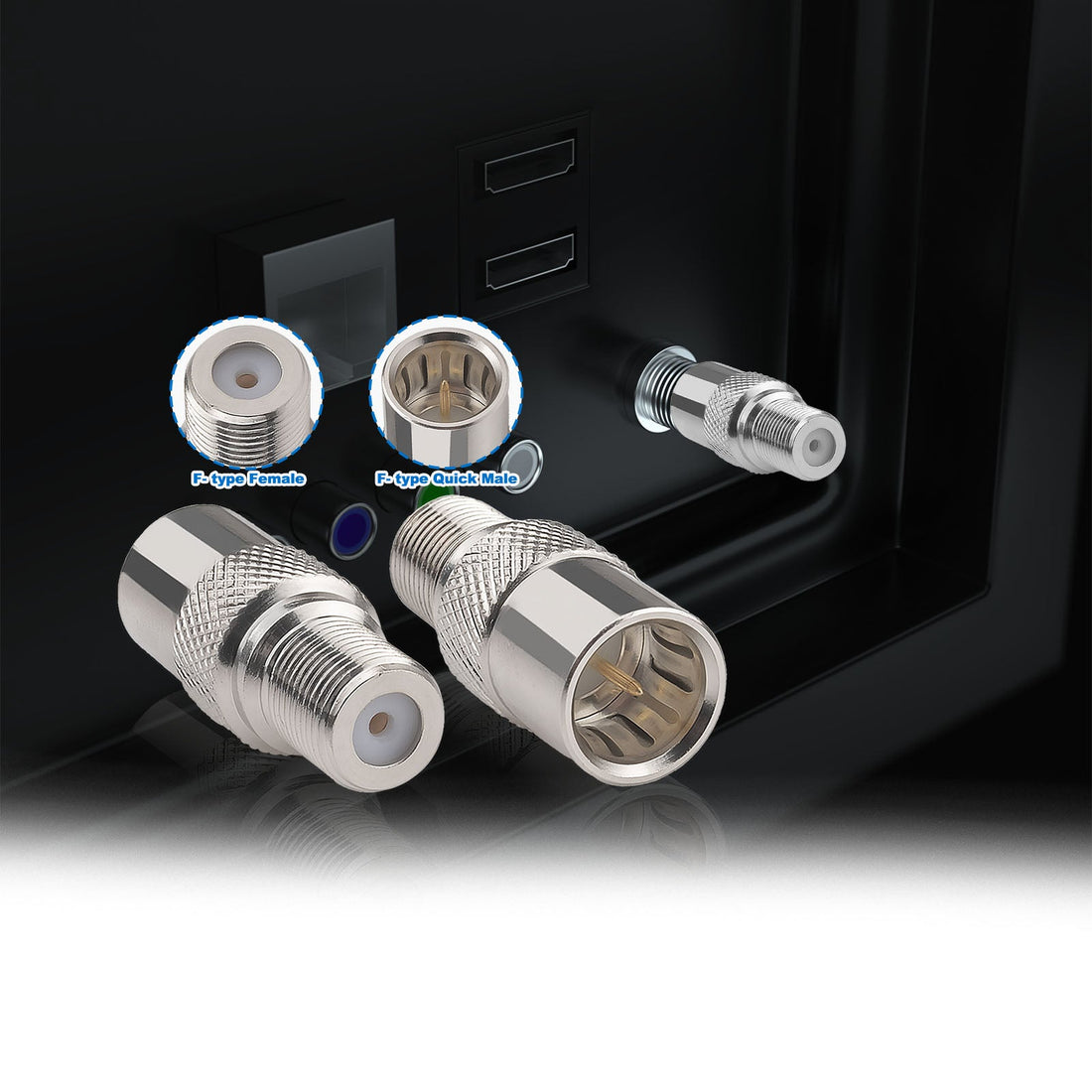
The Quick-Connect F-Male to F-Female Adapter: A Reliable RF Solution
Share

In RF and coaxial systems, having the right adapter can mean the difference between a smooth workflow and a frustrating setup. The quick-connect F-male to F-female adapter combines speed and reliability, making it a go-to choice for professionals who need fast, secure connections without sacrificing performance.
How It Works
This adapter bridges two common RF connector types:
- Quick-Connect F-Male – A push-and-click design for instant mating.
- Threaded F-Female (Imperial Standard) – A screw-on interface for robust, long-term connections.
The quick-connect side uses a spring-loaded latch mechanism—simply push in until you hear a click, and press the release tab to disconnect. No twisting or tools required. The threaded F-female side follows imperial (inch-based) standards, ensuring compatibility with a wide range of RF equipment.
Key Features
1. Quick-Connect Convenience
- Fast mating/unmating – Ideal for field work or setups requiring frequent changes.
- Secure lock – The audible "click" confirms a proper connection, reducing accidental disconnects.
- No tools needed – Saves time compared to threaded connectors.

2. Threaded Reliability
- Sturdy imperial threading – Compatible with standard F-type equipment.
- Vibration-resistant – Unlike push-on-only connectors, the threaded side won’t loosen under movement.
3. Durability & Signal Integrity
- High-conductivity brass body – Often gold- or nickel-plated to resist corrosion.
- 50-ohm impedance – Minimizes signal loss for cleaner RF transmission.
- Sealed options available – Some models include rubber gaskets for moisture resistance.

Where It’s Used
- Satellite & Aerospace – Quick swaps for antenna feeds during testing.
- Medical Imaging – Connecting RF components in MRI/CT machines where speed matters.
- Broadcast & Telecom – Temporary setups or crowded patch panels needing fast reconfigurations.
- Industrial Automation – Vibration-prone environments where threaded connections prevent failures.
Choosing the Right Adapter
- Check threading – Ensure compatibility with your equipment (imperial vs. metric).
- Frequency needs – Standard F-types handle up to ~2 GHz; verify your signal range.
- Environmental factors – For outdoor/harsh conditions, opt for sealed or corrosion-resistant plating.

Final Thoughts
Whether you’re troubleshooting a live broadcast or assembling a satellite module, this adapter eliminates the hassle of mismatched connectors. The quick-connect side saves time during adjustments, while the threaded end guarantees a stable link.
Need a custom version? We can tailor materials, plating, or sealing to your specs—just ask!
Have a specific RF challenge? Drop us a line—we’re happy to help troubleshoot.